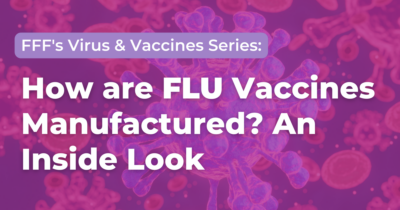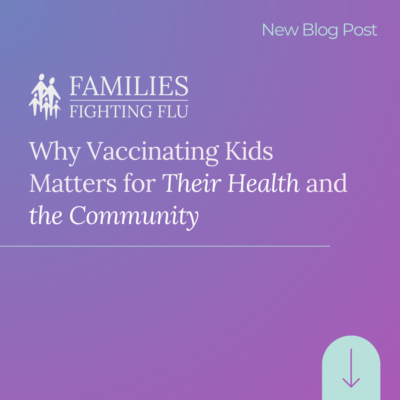
- Flu Vaccine Information
Virus & Vaccines Series: How are Flu Vaccines Manufactured?

While flu is top of mind, many other infectious diseases are preventable, thanks to the power of vaccines! In this series, we’ll take you through the know-how on viruses and vaccines, so you have all the factual information you need to protect yourself, your family, and your community.
In March 1918, outbreaks of flu-like illness were first detected in the United States, but influenza has been around for thousands of years.
Did you know that the 1940s were a pivotal time in the history of the flu vaccine? During this decade, Thomas Francis, Jr., MD and Jonas Salk, MD (yes, the one who developed one of the first successful polio vaccines) served as lead researchers at the University of Michigan to develop the first inactivated flu vaccine. Their vaccine used fertilized chicken eggs. Most of the U.S. supply is still made using this egg-based production process. But, there are three different flu vaccine production technologies approved by the U.S. Food and Drug Administration (FDA):
- Egg-Based Flu Vaccine
- Cell Culture-Based Flu Vaccine
- Recombinant Flu Vaccine
According to the FDA, the influenza vaccine triggers your immune system to produce antibodies that help the body prevent the flu. Manufacturers use fertilized chicken eggs to grow flu viruses. After about six months of laboratory work and manufacturing, those viruses are incorporated into that season’s flu vaccine.
Each flu season, between 5 and 20 percent of the U.S. population is infected with the flu virus, and approximately 8 percent experience flu illness. Flu vaccines can reduce the chances of getting sick with the flu by up to 60 percent! Because flu viruses are constantly changing, flu vaccines are updated from one season to the next to protect against the types of flu that are most likely to make people sick. During the seasonal flu epidemic of 1947, it was discovered that there were changes in the composition of circulating flu viruses, showing the need for continuous surveillance and characterization of circulating flu viruses. That’s why producing a new vaccine each yaer starts well before the current flu season ends.
There are also different types of flu vaccines:
- Quadrivalent Inactivated Influenza Vaccines (IIV4)
- Trivalent Inactivated Influenza Vaccines (IIV3)
- Quadrivalent Live Attenuated Influenza Vaccine (LAIV4) (Nasal spray)
The FDA, World Health Organization (WHO), CDC, and other partners collaborate by collecting and reviewing data on the circulating strains of influenza from around the world to identify those likely to cause the most illness in the upcoming flu season. Every year, an advisory committee reviews data about which flu viruses have caused disease in the past year, how the viruses are changing, and disease trends. That way, they can recommend the flu virus strains to include in the upcoming year’s vaccine. So much is happening behind the scenes to keep us safe and protected!
Getting back to history, the original vaccine only included an inactivated influenza A virus. As a quick lesson, there are four types of influenza viruses: A, B, C, and D. Influenza A and B viruses cause seasonal epidemics (also known as flu season) almost every winter in the United States. In the 1940s, Influenza B viruses were also discovered. From there, a bivalent (two-component) vaccine that offered protection against influenza A and influenza B viruses was produced.
Today’s manufacturing process combines the newly selected flu strains to make the vaccine into standard dosages. The vaccine is put in vials, syringes, and (for the nasal vaccine) nasal sprayers. According to the FDA, egg-based and non-egg-based manufacturing methods for FDA-approved flu vaccines require high-tech processes and manufacturing facilities that the FDA has inspected. Vaccine manufacturers must submit applications to the FDA that include the new flu strains in their FDA-approved vaccines and updated prescribing information. They all undergo rigorous quality testing to ensure they meet all of the standards.
The FDA typically begins releasing flu vaccines in late summer into early fall. From there, manufacturers distribute the vaccine throughout the U.S. for use by the public so that you can get yours at your local pharmacy, grocery store, or doctor’s office.
Here is an interesting video and history from WHO about the flu vaccine.
Flu vaccines have existed for many years, with excellent safety records. Influenza is one of the deadliest vaccine-preventable diseases in the U.S., and influenza vaccination is the single best way to help protect yourself and your family from the flu each year. Thank you to all those who work tirelessly to study the strains, manufacture the vaccine, and work hard to protect us all!


